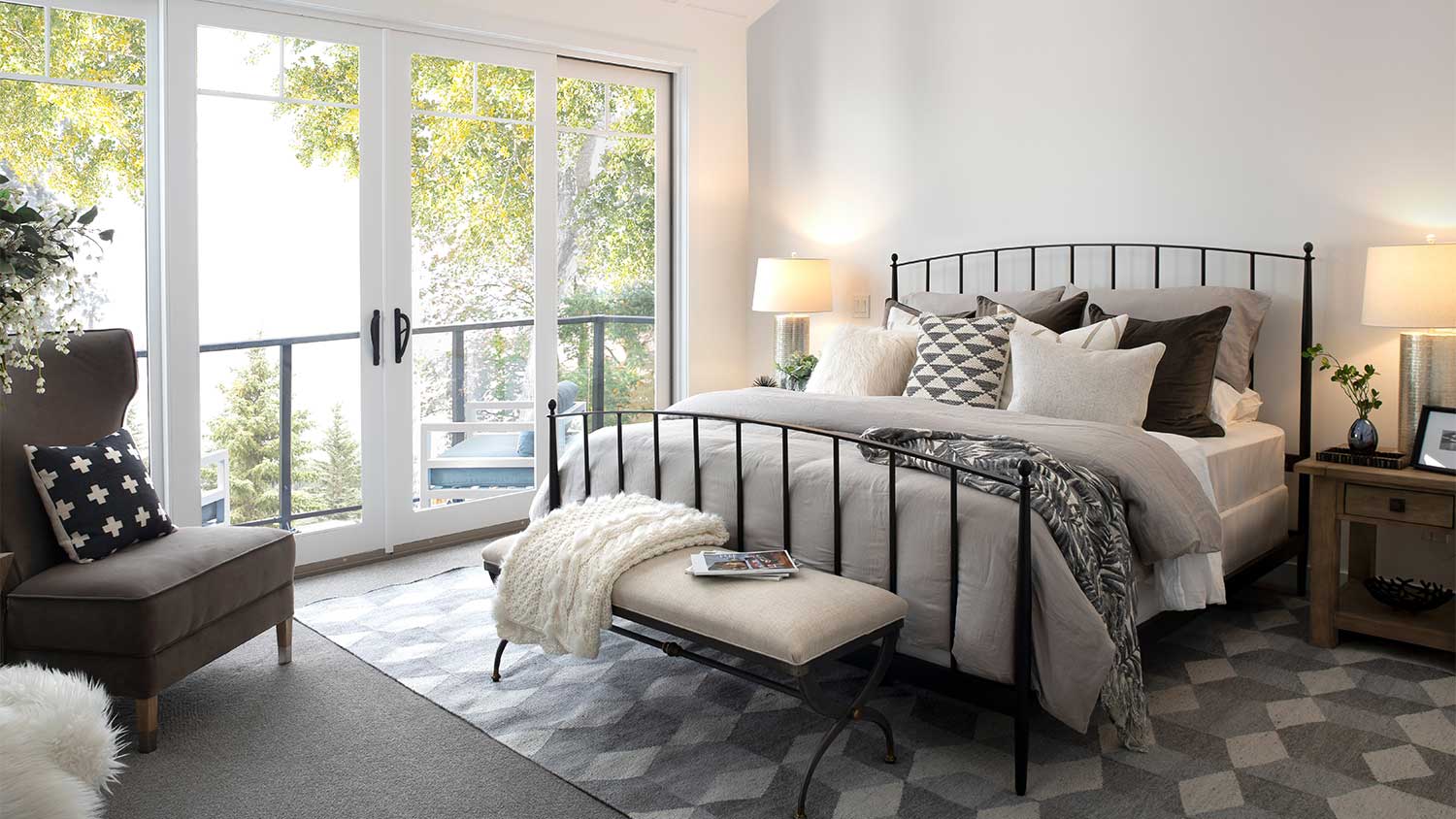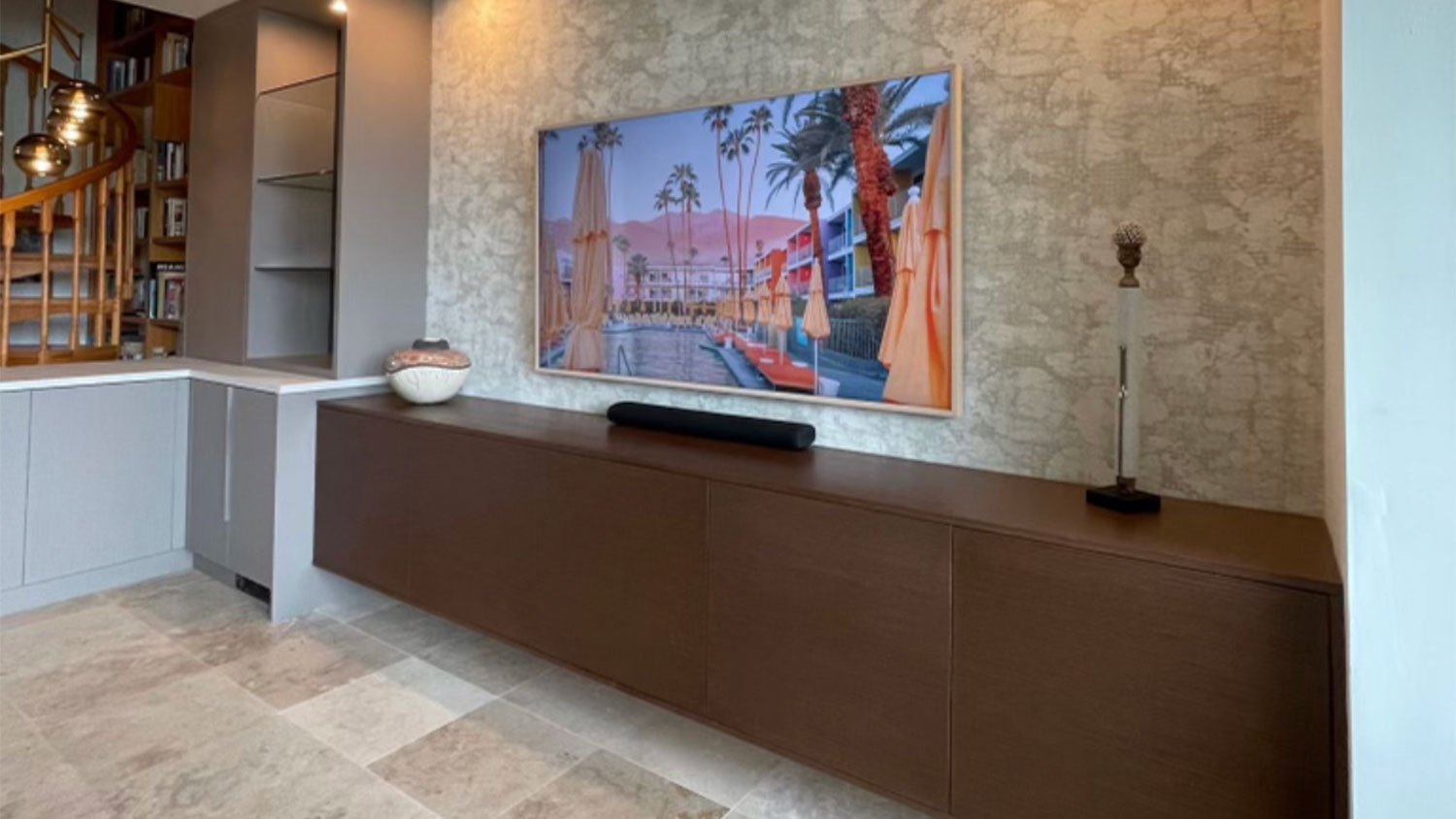13 Ideas for Integrating Geometric Shapes Into Everyday Spaces
Give shape to stylish rooms with these design tips


You’re aiming to bring structure and a contemporary feel to your home. Enter geometric shapes. From circles to squares, rectangles, and hexagons, they’re another way to add visual interest. For tips on whipping your home into shape style-wise with this approach, read on.
1. Go Black and White
By pairing a few shapes with black and white tones, you’ll get a sleek, contemporary space, as with the above kitchen. Since the only hues are these neutrals, your eyes focus on the range of geometrics, including circles, squares, and rectangles. Think about asking your local stair railing installer to put in black balusters; the railings here carry on the shape-forward theme.
2. Tell Stories With Shapes

Reflect on more than items’ shapes; consider their story and whether they represent a specific cultural tradition. In this outdoor kitchen, modern glass tiles contrast with an antique-looking vase.
“The blue complements the tropical island vibe of this Key Biscayne outdoor kitchen. I chose the vase to bring in a cultural aspect to this space,” says interior designer Rhona Rubio of The Miami Design Studio. “I always love bringing in something old, handmade, and rugged. Every space needs to feel like it has a history.”
3. Shine On
The surfaces of objects can also impact design. Consider how a cylindrical side table in an ultra-glossy metallic finish will look glam or how matte rectangular kitchen cabinets will read as more subdued and contemporary. For added drama, go for shine.
4. Aim for Balance

Although rectangles take center stage in this modern kitchen, the room is not monotonous. That’s because the designers aimed for balance by scattering darker and lighter tones throughout the space. For even more harmony, they tied the hue of the adjoining rooms’ wood ceilings in with the quartz they used for the countertop, island, and backsplash.
5. Go for an Accent Wall

Jazz up one wall in a room with geometric tile, like in this fun bathroom. If the entire room featured this pattern, the effect would be overwhelming. Like stylish accent walls painted vibrant shades, this is a moderate approach for adding visual interest to an interior.
6. For a Softer Look, Emphasize Curves
Opt for curvy elements, like circles, ovals, and wavy lines to create a cozy, warm room. Ask your local interior designer to try this approach in bedrooms, dens, screened-in porches, or other places where you want to relax.
7. Add Shapely Plants

To achieve a Bohemian look, rely on some greenery, as in this home office. Consider low-maintenance spider plants, which bring narrow, strap-shaped elements. Meanwhile, cacti combine a variety of shapes (like ovals and teardrops) with a spiky texture for even more intrigue.
8. Select an Area Rug

An area rug is an ideal vehicle for exploring shapes, like the floor covering in this bedroom. Although a couple of the throw pillows carry on the geometric theme, the remainder of the room is unpatterned. By limiting the play with shapes, the effect is calming rather than chaotic.
9. Take a Subtle Approach

For a lower-contrast look, go with more fluid shapes in muted tones. Here, a Kelly Wearstler wallpaper brings soft neutrals and circular forms, creating a warm, serene, and inviting space. Still, it’s not repetitive or monotonous since the circles contrast with the square floor tiles and long rectangular cabinets.
10. Look to Lighting

Light fixtures provide another route for introducing shapes. Both sets of hanging fixtures are black to avoid visual cacophony in this dining area. The color black helps tie the space together, making it cohesive despite the variety of shapes.
11. Try Terrazzo

If you’re trying to add interest to a boxy and generic space, consider terrazzo, a unique countertop composite material that features chips of marble, quartz, granite, or glass. In this kitchen, the small shapes in the terrazzo (in the island, countertops, and backsplash) add dynamism and depth to the space.
12. Include Negative Space
Select some pieces of furniture with distinctive profiles or holes to add intriguing negative space. For instance, consider a unique side table, stool, or folding screen.
13. Embrace Some Limits
If you plan on including a large variety of shapes, limit the number of hues. Too many shapes combined with lots of colors will make your space look chaotic and overwhelming.




















